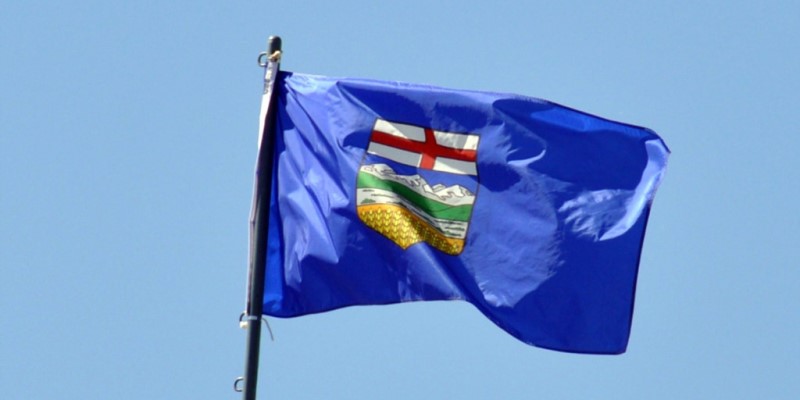‘Blue Ribbon’ recommendations can help repair Alberta’s finances

Earlier today, the Government of Alberta released the recommendations of its “Blue Ribbon Panel” on Alberta’s finances. The report provides a thorough overview of the challenges Alberta’s government faces related to deficits and debt accumulation, and its recommendations constitute a serious and detailed plan to respond to those challenges.
Specifically, it shows that under the policy status quo, the operating deficit will continue to grow, reaching $9.1 billion in 2020/21. Provincial net financial debt is also forecasted to rise—to $66.6 billion by 2023. All this debt would mean higher interest payments for Alberta taxpayers, leaving less money available for other important priorities including public services and tax relief.
But the panel, led by former Saskatchewan finance minister Janice MacKinnon, offers a realistic plan for returning to budget balance in 2022/23 and repairing provincial finances. Broadly, the report recommends holding nominal program spending flat at roughly 2018/19 levels until 2022/23. It recognizes several forecast risks on the revenue side of the ledger but shows that, if current revenue forecasts come to pass, this restraint over the coming years would be sufficient to balance the budget on the government’s proposed timeline.
Holding nominal spending constant for four years is not easy given cost pressures from inflation and population growth (which combined have averaged just under 3 per cent annually since 2015). To be sure, the proposed consolidation is significantly less ambitious than the 20 per cent nominal spending reduction over three years implemented by the Klein government in the 1990s. But it would still represent a meaningful reduction in real per-person spending over time and will therefore require policy reform.
The report also provides several specific recommendations to help achieve these reductions in real per-person spending, ranging from bringing college and university tuition into line with other provinces to reducing physician compensation.
Moreover, as we showed in a report published last week, per-person program spending in Alberta is significantly higher than in the other large provinces—British Columbia, Ontario and Quebec. The report provides additional detail on the gap between Alberta and other provinces in key areas of government activity and shows how bringing health care and education spending in line with the other large provinces would go a long way to achieving budget balance. The report makes it clear that tough decisions must be made, but it’s entirely reasonable to expect Alberta government departments to operate within budgets comparable to other large provinces.
Some of the report’s proposals include risk. For starters, it calls for a somewhat gradual return to balance over the course of four years. For comparison, the successful deficit-elimination efforts of the 1990s took place over a two- to three-year timeline. The additional time in the MacKinnon report’s proposed path to balance prolongs the period that the path-to-balance is at risk from revenue shocks, which may occur due to a global economic slowdown or another dip in resource prices (the report acknowledges both of these risks).
Further, while the report notes the competitiveness challenges facing Alberta and provides several good ideas for pro-competitiveness policy reform, its fiscal plan does not create room in the near-term for restoring Alberta’s “tax advantage” on personal income taxes (PIT). Large provincial and federal PIT increases in recent years, combined with tax relief in the United States, has badly undermined Alberta’s competitiveness in this important area of tax policy.
Moving to balance more quickly to reduce the risks of derailment from revenue shocks, while also providing pro-growth and pro-competitiveness tax relief, would require nominal program spending reductions instead of the freeze called for in the MacKinnon report. One recent analysis shows that Alberta could return to balance in three years instead of four while creating fiscal room for comprehensive tax relief by reducing nominal spending by 10.9 per cent over the next three years.
Notwithstanding these points, the MacKinnon report represents a serious and responsible set of recommendations that would go a long way towards restoring Alberta to fiscal health. Indeed, if the previous government under Rachel Notley had done what the MacKinnon report now urges the Kenney government to do—hold nominal spending flat over a four-year period—Alberta would not have a budget deficit today. The report reflects a clear understanding that continued spending growth in the face of large deficits is the primary reason large deficits have persisted, and provides a roadmap for ceasing the nominal spending growth and shrinking the deficit over time.
If the Kenney government’s first budget in October reflects the recommendations of the MacKinnon report, it will demonstrate a willingness to finally make the decisions necessary to bring spending closer in line with other large governments and back in line with provincial revenue. This would be a welcome change from recent years when nominal spending continued to grow and no concerted effort was made to eliminate the deficit.
Author:
Subscribe to the Fraser Institute
Get the latest news from the Fraser Institute on the latest research studies, news and events.

